Do you have a question about the EQUATION EQ3-9K and is the answer not in the manual?
Illustrations showing the placement and connection of indoor and outdoor units.
Instructions for securely mounting the outdoor unit to a concrete or block base.
List of essential tools and materials required for installation and servicing.
Details on the types of copper pipes and their specifications for refrigerant lines.
Specifications for piping radial thickness based on size and refrigerant type.
Dimensions and guidelines for machining flares on pipes for R32 refrigerant.
Information on the dimensions and types of flare nuts used for connections.
Procedure for testing the system for leaks using nitrogen pressure.
Steps and requirements for evacuating the refrigerant system using a vacuum pump.
Instructions on how to charge refrigerant R32 into the unit.
Actions to take in case refrigerant leaks are detected.
Description of R32 refrigerant properties and handling characteristics.
List of included accessories for the outdoor unit installation.
Criteria for choosing a suitable location for the outdoor unit.
Steps for physically mounting and securing the outdoor unit.
Technical dimensions and spacing requirements for outdoor unit installation.
Guidelines for selecting an appropriate location for the indoor unit.
Diagrams illustrating the installation process for the indoor unit.
Instructions on how to reposition or connect the drain hose for the indoor unit.
Steps for installing the mounting plate and drilling the wall hole for the indoor unit.
Procedure for creating the wall opening for piping and wiring.
Steps for connecting pipes, drain hose, and electrical cables to the indoor unit.
How to securely hang and attach the indoor unit to its mounting plate.
Guidance on safely removing the indoor unit from its packaging or mounting.
Procedure for connecting the electrical power and communication cables.
Specifications for the diameter of liquid and gas pipes.
Detailed steps for connecting the refrigerant pipes, including bending and fastening.
Table showing the maximum allowable refrigerant charge for different models.
Steps for conducting an air tightness test using nitrogen.
Detailed steps for vacuuming the refrigerant lines using a vacuum pump.
Safety precautions and guidelines for performing electrical wiring work.
Table for selecting appropriate wire sizes and circuit protection.
Step-by-step instructions for connecting the electrical wiring between units.
Troubleshooting for Eeprom failure on the main board.
Troubleshooting for IPM module failure.
Diagnosing communication errors between boards or modules.
Understanding and resolving high pressure protection triggers.
Addressing issues related to compressor discharge temperature.
Troubleshooting abnormal readings from piping sensors.
Diagnosing failures related to the suction temperature sensor.
Troubleshooting issues with the outdoor ambient sensor.
Diagnosing problems with the compressor discharge sensor.
Identifying and addressing low refrigerant levels.
Troubleshooting issues with the 4-way reversing valve.
Diagnosing compressor jamming errors.
Addressing compressor over-current faults (U, V, W phases).
Illustrations showing the placement and connection of indoor and outdoor units.
Instructions for securely mounting the outdoor unit to a concrete or block base.
List of essential tools and materials required for installation and servicing.
Details on the types of copper pipes and their specifications for refrigerant lines.
Specifications for piping radial thickness based on size and refrigerant type.
Dimensions and guidelines for machining flares on pipes for R32 refrigerant.
Information on the dimensions and types of flare nuts used for connections.
Procedure for testing the system for leaks using nitrogen pressure.
Steps and requirements for evacuating the refrigerant system using a vacuum pump.
Instructions on how to charge refrigerant R32 into the unit.
Actions to take in case refrigerant leaks are detected.
Description of R32 refrigerant properties and handling characteristics.
List of included accessories for the outdoor unit installation.
Criteria for choosing a suitable location for the outdoor unit.
Steps for physically mounting and securing the outdoor unit.
Technical dimensions and spacing requirements for outdoor unit installation.
Guidelines for selecting an appropriate location for the indoor unit.
Diagrams illustrating the installation process for the indoor unit.
Instructions on how to reposition or connect the drain hose for the indoor unit.
Steps for installing the mounting plate and drilling the wall hole for the indoor unit.
Procedure for creating the wall opening for piping and wiring.
Steps for connecting pipes, drain hose, and electrical cables to the indoor unit.
How to securely hang and attach the indoor unit to its mounting plate.
Guidance on safely removing the indoor unit from its packaging or mounting.
Procedure for connecting the electrical power and communication cables.
Specifications for the diameter of liquid and gas pipes.
Detailed steps for connecting the refrigerant pipes, including bending and fastening.
Table showing the maximum allowable refrigerant charge for different models.
Steps for conducting an air tightness test using nitrogen.
Detailed steps for vacuuming the refrigerant lines using a vacuum pump.
Safety precautions and guidelines for performing electrical wiring work.
Table for selecting appropriate wire sizes and circuit protection.
Step-by-step instructions for connecting the electrical wiring between units.
Troubleshooting for Eeprom failure on the main board.
Troubleshooting for IPM module failure.
Diagnosing communication errors between boards or modules.
Understanding and resolving high pressure protection triggers.
Addressing issues related to compressor discharge temperature.
Troubleshooting abnormal readings from piping sensors.
Diagnosing failures related to the suction temperature sensor.
Troubleshooting issues with the outdoor ambient sensor.
Diagnosing problems with the compressor discharge sensor.
Identifying and addressing low refrigerant levels.
Troubleshooting issues with the 4-way reversing valve.
Diagnosing compressor jamming errors.
Addressing compressor over-current faults (U, V, W phases).
| Cooling Capacity | 9000 BTU/h |
|---|---|
| Power Supply | 220-240V, 50Hz |
| Refrigerant | R410A |
| Operating Temperature (Cooling) | 18°C to 43°C |
| Dimensions (Outdoor Unit) | 700 x 552 x 256 mm |



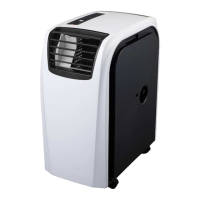

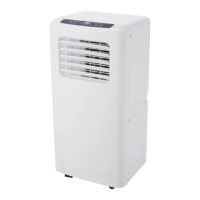
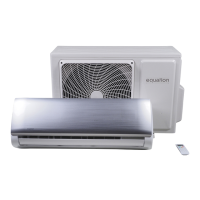
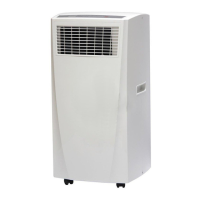
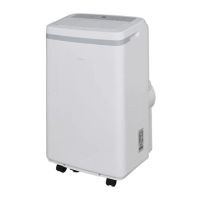

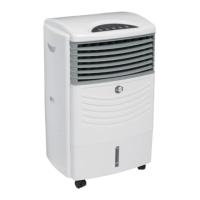

